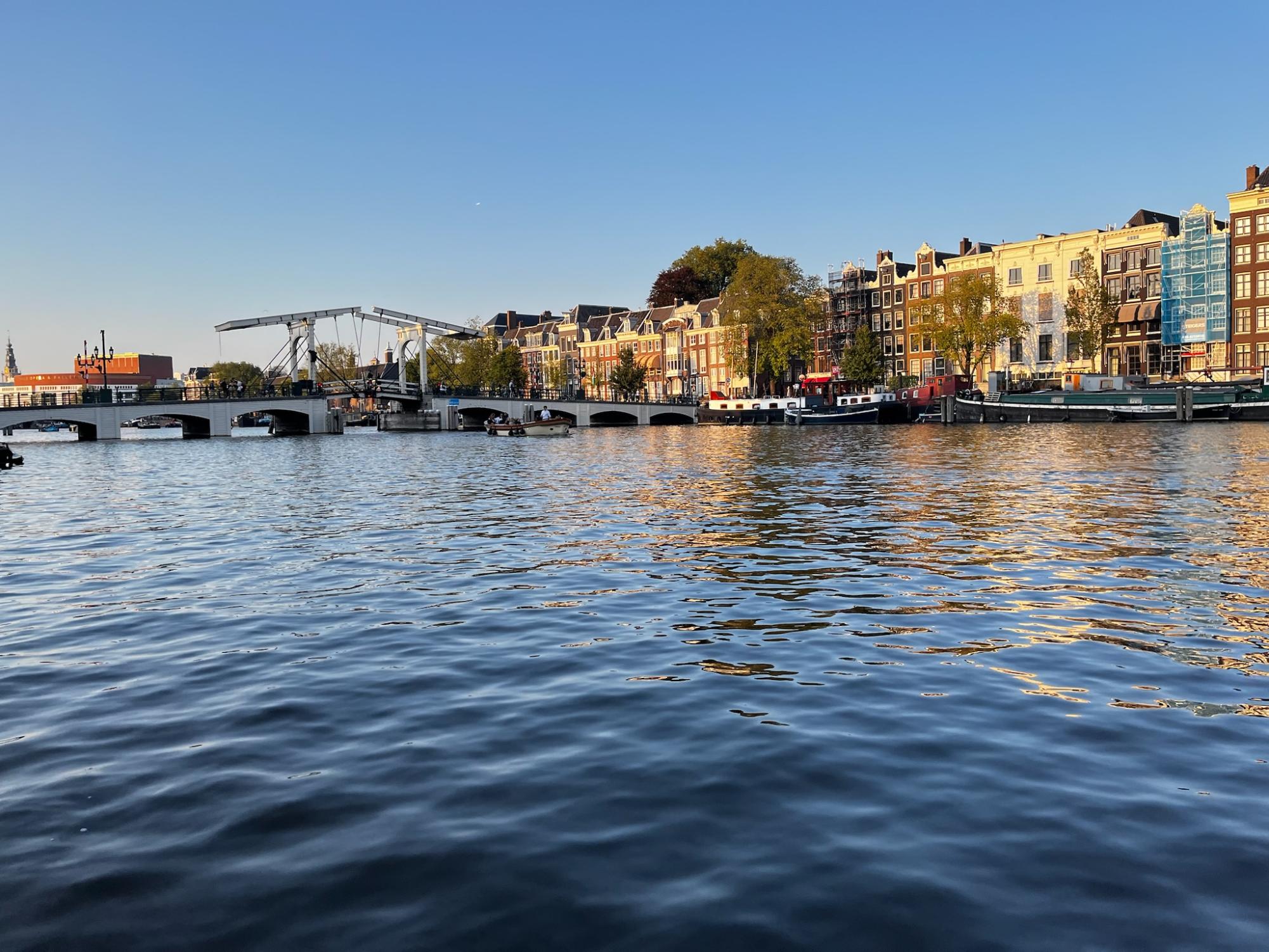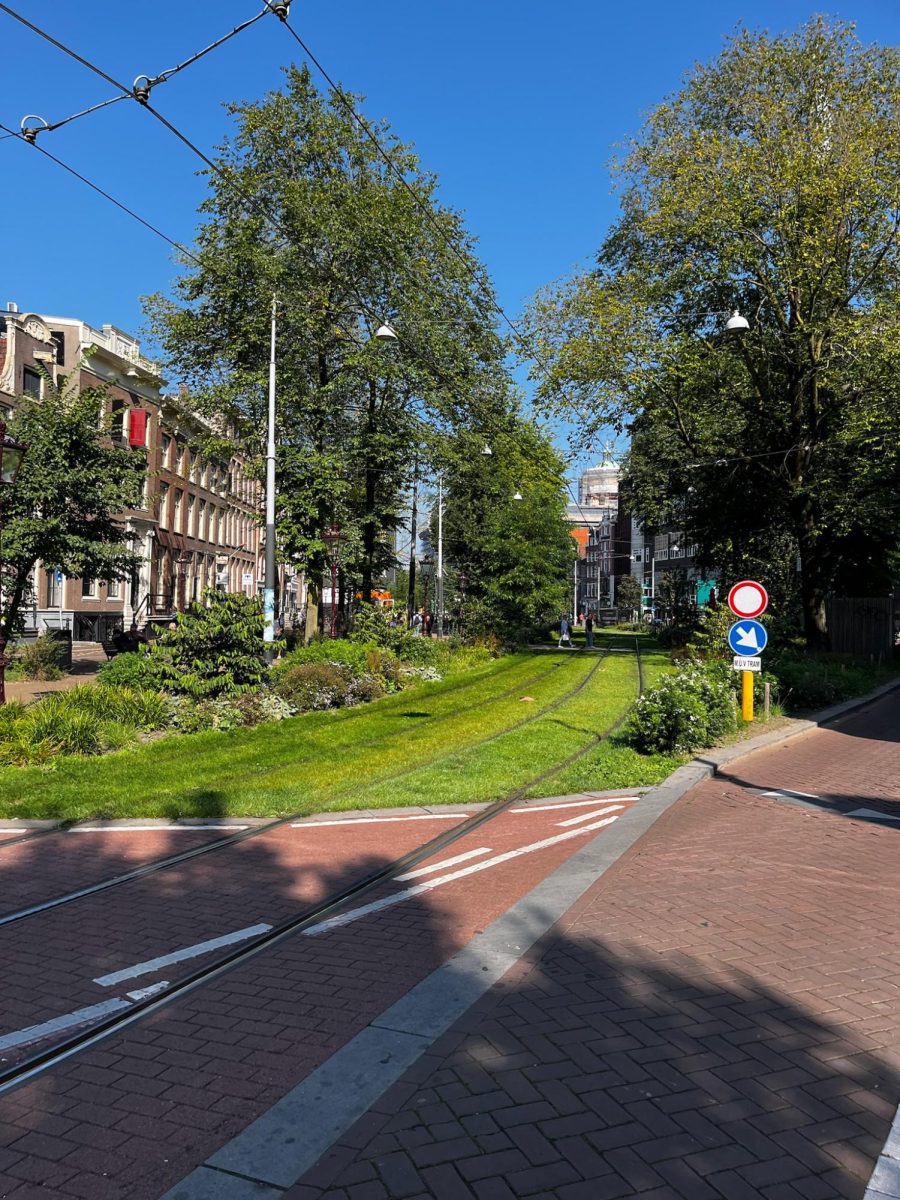Amsterdam — or as I affectionately call it, European Vegas — is almost a paradoxical city. It’s this impossibility that makes it the ultimate vacation destination, especially for study abroad students looking for a weekend to remember (even if they won’t).
A gaggle of Californians and I undertook a journey to this promised land after two weeks of London smog and marijuana withdrawals; we found ourselves transported to a corrupted paradise. Unbeknownst to me, we were staying in the red light district. My walk to my hostel from the train station had the kind of view you don’t soon forget. This area is what earns Amsterdam the moniker I attributed to it earlier. Sex for sale in the window like it’s a pastry with purple and red lights to boot. A woman will wait, scantily clad, for a customer to knock on her door in the rented room, whereupon she’ll throw the curtains shut and lead him to a bed in the back.
Travel another block and you’ll find a traditional Dutch coffeeshop, or as any Californian would rightly call it, a dispensary. Cannabis is technically illegal in the Netherlands, as is any other drug. However, the substance has been sold throughout Holland under an official policy of tolerance introduced in the ‘70s. The idea was that if cannabis was sold quasi-legally and under strict conditions, it would be easier to crack down on hard drugs.
Part of that equation was satisfied, but the expectation of eliminating hard drugs hasn’t seemed to have worked. Random clubgoers offered our group pills, cocaine and MDMA, at every club or bar we visited. It felt like taking a field trip to the high school from Euphoria. While I myself have never been a fan of winter sports, the people around me certainly seemed to be.
Magic truffles are available in a variety of stores as well. While not technically the same as psilocybin mushrooms, they are designed to produce the same effects. The truffles contain the root structure of the psilocybin mushroom and the part of the fungal network that produces the hallucinogenic chemicals that give magic mushrooms their sparkle. Magic mushrooms themselves are banned as of 2008, however as you can predict the phrase “But it’s Amsterdam,” applies here once more.
That was said by our canal tour guide while he watched a group of Dutch teens drink and blast music on their boat. While amplified music is banned on the Prinsengracht, the principal canal of Amsterdam, it still happens all the time, according to our guide. It falls in line with a city that claws 15,000 bicycles a year from the same waterways.
It’s the kind of canal tour that makes Amsterdam truly a gorgeous destination for tourism. You could never go skiing or try any other illicit substance and still have the time of your life. Never have I seen a city more picturesque. Houses generally look the same and every building, aside from churches, administrative buildings, historical sites, and museums, is the same height. There’s something very pleasing to the eye about the uniformity. The architecture is stunning and you can see it all in a day because the city itself is so small. It was sunny as well which certainly helped my perception. The entire canal ring is protected by UNESCO, and whatever sites aren’t protected are surrounded by other historic sites and green space.
Tram tracks dart between trees and across grass. I was able to visit a multi-block outdoor market and find amazing clothes and jewelry, then immediately get a coffee from a cafe and sit in the sun. Every roadway is cobblestone, covered in more bikes than cars. The bike lanes are as wide if not wider than driving lanes.
It’s not just pretty sights and plentiful drugs that make Amsterdam a desirable destination for study abroad students, it’s the vibe. Whether it’s been enhanced handily by the weed or not — who’s to say — the fact is that life in Amsterdam feels relaxed. A non-judgemental cultural norm proliferates the city, so there’s not a lot of concern with what one person or another is doing with their life.
Dutch people traditionally go as far as to leave their blinds and curtains open, or to forgo them entirely. This can be traced to Calvinism, the branch of Christianity that has influenced much of Holland’s society, despite the fact most Dutch people are not religious. People believe that if you are a good and moral person then you have nothing to hide, so shame takes a backseat. This also explains why Dutch people can be stereotyped as quiet, loving rules, and very straightforward. Some people can misconstrue this as rude, but I found everyone I met to be really pleasant, helpful, and kind.
Whether you’re there for swimming in the Amstel river or smoking so much you have to go lay down, Amsterdam can offer a relaxing sabbatical with visits to world-class museums or a weekendful of depraved decadence.






